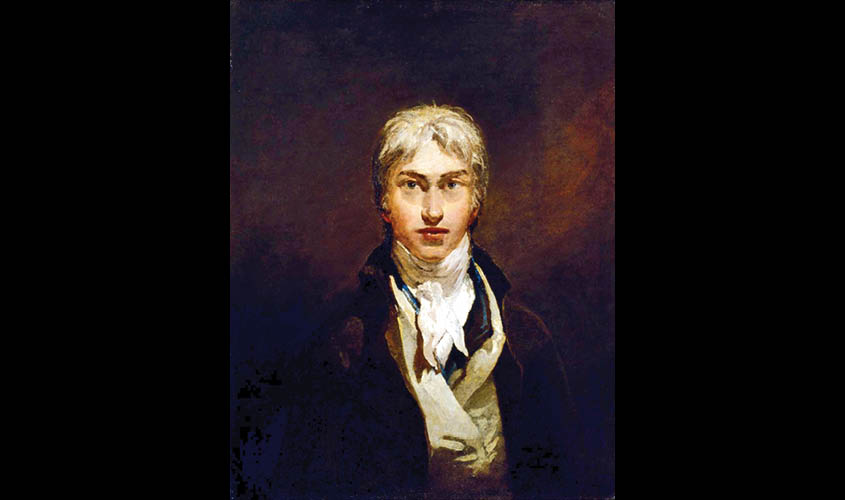It was a conclusion as sappy-sweet as the climax of “Mean Girls,” when Lindsay Lohan’s character breaks apart her homecoming queen tiara and divides the pieces among her classmates. Assembled in Margate, England, to discover the winner of the 2019 Turner Prize, members of the British art world discovered that the long-in-the-tooth award would go to … all four nominated artists.
“I have great pleasure in announcing the winner,” said Edward Enninful, the editor of British Vogue, as he opened the envelope. But inside was an unprecedented result: The shortlisted artists, Lawrence Abu Hamdan, Helen Cammock, Oscar Murillo and Tai Shani, had proclaimed themselves a collective, “to make a strong statement of community and solidarity.” And the jury had “unanimously agreed to award the 2019 Turner Prize to the collective formed by the four nominees,” said Enninful, eliciting both startled laughter and a standing ovation.
Abu Hamdan, Cammock, Murillo and Shani will each take home a quarter of the Turner’s less-than-munificent $52,000 kitty. And their gesture of solidarity has elicited both romantic statements of “unity” and “resistance” and sad-sack braying about “participation trophies.”
Forgive me if I find myself unable to align myself fully with either of these camps.
Yes, this year’s outcome has a whiff of “all must have prizes.” But I admire these artists’ cunning in twisting the rules of the Turner Prize for their own purposes — which continues a notable uptick in recent years of participants refusing to kowtow to institutions, roughing up their precedents and speaking out against their administration.
The Turner, first awarded in 1984, truly gained prominence in the 1990s, during those now mercifully forgotten days of “Cool Britannia.” At schools like Goldsmiths and the Glasgow School of Art, and in magazines like Frieze and Afterall, British art was throwing off its old insularity. The Tate Gallery was preparing to move its modern programming into a huge power station south of the River Thames, and its annual prize was establishing what would almost become a new academy.
The Turner Prize, awarded live on the BBC after a monthslong exhibition of the nominees, helped establish the public reputations of Rachel Whiteread, Antony Gormley, Chris Ofili and (it was the ’90s) Damien Hirst — their notoriety helped along by Britain’s squalid tabloid press, which annually
The award became so visible that it spawned a number of continental imitators. Both the Prix Marcel Duchamp in France and the Preis der Nationalgalerie in Germany were responses to the Turner’s success.
But in the past 10 years, the Turner and similar prizes have lost a lot of their clout.
Art stars are a phenomenon from another age, thankfully. The prize’s winner-takes-all model, borrowed from book and film awards, makes less and less sense to participants working in a diversity of artistic modes. The rise of social practices, and of collaborative endeavors in particular, makes even attempting to judge an art prize seem capricious.
More than anything, the economic fortunes of the art world (and of art capitals like London and New York) have juddered since the 1990s, and even artists successful enough to be nominated for Britain’s biggest prize now find themselves on the losing side of the equation.
This year’s Turner twist was prefigured, to a degree, by a brouhaha around the 2017 Preis der Nationalgalerie, during which the four nominated artists — Jumana Manna, Sol Calero, Iman Issa and the eventual winner, Agnieszka Polska — issued a joint statement that flayed the prize as “more of a celebration of the sponsors and institutions than a moment to engage with the artists and their works.”
They mocked “the self-congratulatory use of diversity as a public-relations tool,” and dismissed the false assumption, common outside the art world, that a prestigious prize nomination provides financial reward.
Under those circumstances, why shouldn’t artists give up on the brass ring and try something new?
OK, it all does feel slightly ridiculous. The Turner quartet’s subversive act will, paradoxically, affirm their own position within the museums, biennials, fairs and institutions that confer artistic prestige and power.
Still, amid a growing skepticism of art institutions’ purported progressiveness — and a week before a British general election that polls suggest will return to power the Conservative government of Prime Minister Boris Johnson — Abu Hamdan, Cammock, Murillo and Shani came to the conclusion that they could exert the greatest pressure by turning the authority of the prize inside out.
At the ceremony, Cammock said on behalf of the four artists that the country’s rightward turn had “made each of us and many of our friends and family again increasingly unwelcome in Britain.” Better to amplify that collective statement, they concluded, than to gamble on what increasingly looks like a minor trophy.
What, then, is the point of a prize like the Turner, the Duchamp or the Preis der Nationalgalerie? The real hangup is not the prizes themselves but the shortlists — the silly and undignified competition among artists who often have nothing in common, and who feel they’re being taken for a ride by sponsors and bigwigs.
I still think there’s a future for the Turner and its ilk, but might I suggest that, going forward, they take a page from the Nobel Peace Prize? Give an award, celebrate an achievement, pop open the Champagne — but keep the shortlist secret for 50 years.
© 2019 The New York Times

